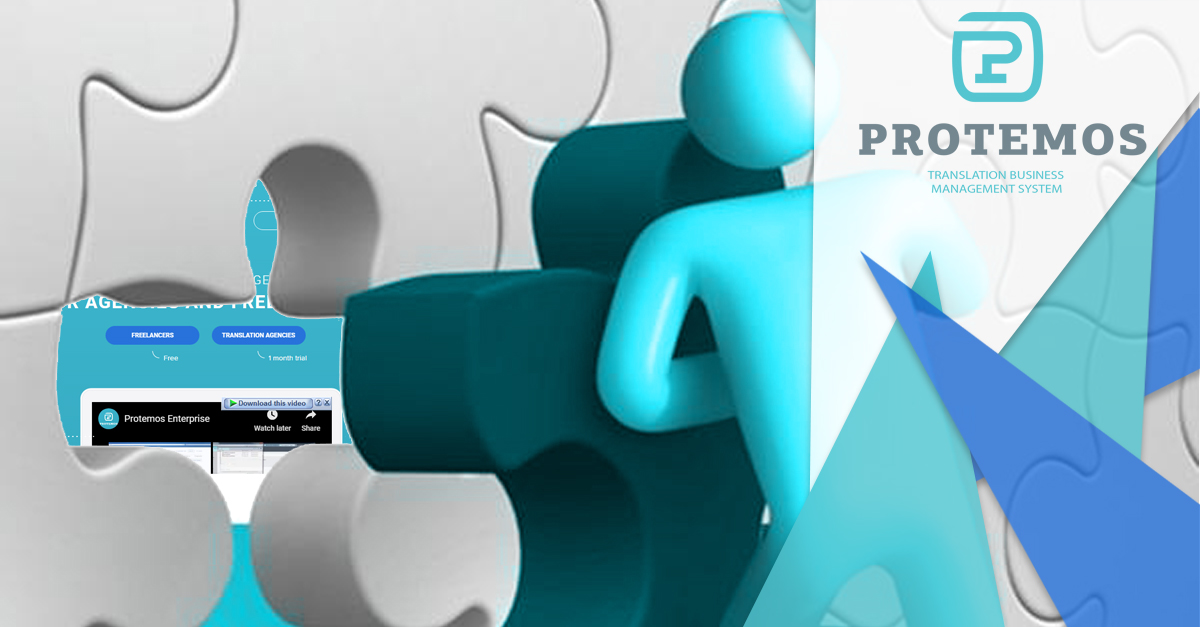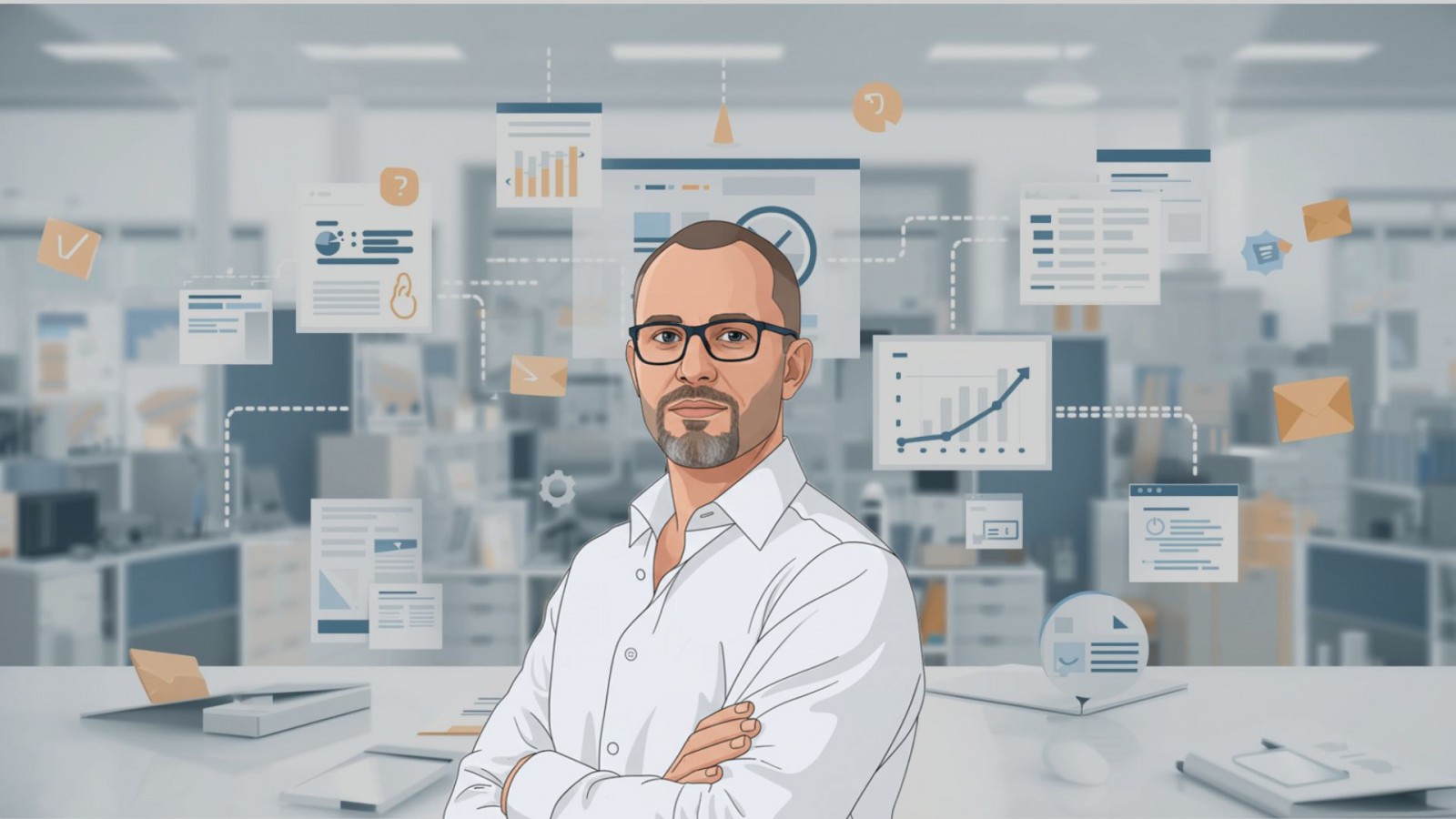
Successful translation agencies tend to develop their own software, especially their own TMS, or translation management system. Why do they do it? And is it worth following their example?
A personalized system is just what you need
There are considerable differences between different Translation agencies and how they organize their working processes. Processes and operations that are essential to one agency may not apply at all to another. There is therefore no one commercially available system that can cover all the requirements of every translation agency: Inevitably, there will be certain functions that aren’t quite adequate, and certain others you don’t need at all. The task of choosing a system for a particular agency is all the more difficult as the translation market is so narrow and there isn’t a great deal of choice in translation management systems.
Normally, a translation agency will decide to go ahead and develop its own project management system either because it cannot find a commercial TMS capable of fully reflecting its own business processes, or because such a system would be unjustifiably expensive. Finding no suitable solution, the company will start developing its own, in the hope that a personalized system will finally enable it to simplify and bring down the costs of management.
This approach is understandable and logical. But you have to consider: development doesn’t come cheap, and it doesn’t happen quickly. Creating a system from scratch will take a minimum of 1-2 years, and during that time you will not get to use the new system at all.
The first release will most likely be a disappointment. Version 1.0 of your management system will work, in the sense that you’ll be able to use it to perform your basic operations. But that is where its usefulness will end: it will be an embryonic system with a whole load of bugs, poor functionality, terrible design and low stability.
You will discover to your surprise that even a custom-made business management system won’t work for you 100%. You’ll have to constantly tweak it, add certain functions, adapt it to new technologies. Apart from that, the cost of keeping it in working order, something that’s separate from development, may come as an unpleasant surprise to you.
In other words, the process of developing a new system is going to be long and arduous.
Why pay for a license?
A translation agency manager will sometimes hit upon this seemingly logical thought when they’ve just sent out the latest payment for their TMS to the developer: wouldn’t it be cheaper to develop our own TMS and avoid the license fees completely?
To develop an operating system into its initial form will take a single programmer approximately two years. To put it another way, following the most economical development model, the cost of your system will be approximately two years of a programmer’s salary. By system, we’re talking here about the basic version, which will be guaranteed to need a lot of tweaking.
Apart from that, the world of IT never stands still: New standards come out, new OS versions, browsers and so on. The system will have to be constantly updated, or else in 2-3 years it will become obsolete. For this you’ll need an in-house programmer on your team. In fact, you’ll most likely need a few of them.
Compare these expenses with the costs of the management system licenses and the licenses may not seem so expensive. Buying an off-the-shelf system is several times cheaper than keeping a team of developers on your staff.
For smaller agencies, the financial burden associated with developing a custom TMS is normally too great. This sort of development is only economically feasible for larger companies that need dozens or hundreds of licenses and have enough resources available to make hiring a team of developers cost effective.
On the other hand, when you’re buying a large number of licenses, the developers will normally offer a significant discount—so the total cost of licenses does not increase in direct proportion to their number, but more gradually. This is another argument in favor of using existing systems.
But you could sell it on!
Let’s say you’ve spent the time and the money and developed a project management system that is perfectly adapted to your company’s production processes. The logical thought comes to you: Hey—I could sell this to other companies!
And you could.
But the first potential buyer for your perfect system throws a whole load of unexpected questions at you and leaves you confounded. Some of the functions you couldn’t live without are things they don’t need at all, and they ask you to get rid of them—others that seem to be of no use, they want you to add. It becomes clear that the working processes in different companies are organized in completely different ways, and the “logical” design of your TMS is incomprehensible to them. It turns out they have completely different requirements for managing projects; their managers perform completely different functions to the ones in your company; the accountants keep records differently; the legal system in their country demands additional certification, etc. You discover a lot of interesting things...
No two translation agencies in the world are alike. Each has its own traditions, processes, division of roles, corporate culture etc. Everyone looks for different functions from a TMS, and it is impossible to create a system that works for everyone.
If you’re planning on selling a system you’ve developed yourself, you’re going to have to adapt it to the demands of your potential clients—and that means investing even more in development.
For another thing, creating a well-functioning system is only half the problem. You have to let people know about it—to invest resources in marketing and advertising. And this is something you’ll have to keep doing at the very least until you stop getting asked: “Who are you? We’ve never heard of you before...”
Creating a brand requires no less effort and resources than development itself. If you’re not prepared to invest in marketing, your chances of commercial success are slim. In fact, they are zero, until people start trusting your brand. By the time you launch your product on the market, you are likely to have competitors, and you will have to compete with them for the consumer’s attention.
But I really want to make my own TMS!
Economic calculations don’t always enter into the decision to develop a personalized system. Often the main drive pushing an owner or manager towards this step is metaphysical in nature—“I want one!” They’re looking for self-fulfillment, or they believe a new TMS will make the world a better place—they just can’t hold back from that creative urge.
This motivation seems irrational. But strangely enough, compared to the others it looks far more reasonable—if only because it suffers none of the illusions or misconceptions outlined above. (Of course, putting such a plan into action is only ever possible if the company has a big enough budget).
If your main aim is to create a decent TMS for managing your projects and your business, which you can then proudly show off to other people, and economic considerations are not a critical concern—go for it!
You may also like to read other article:

.png)
.png)


